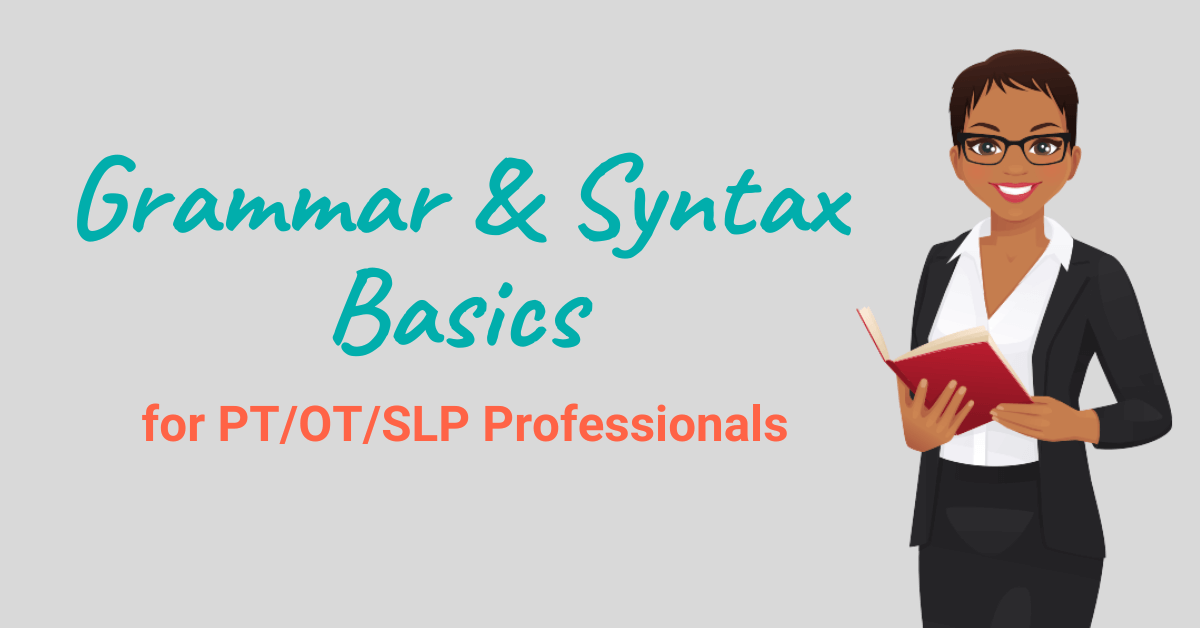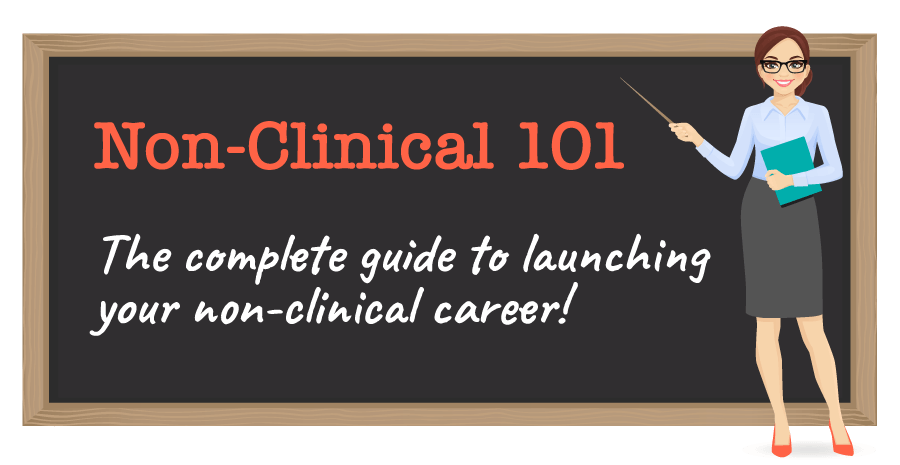If you want to be a health writer, grammar and syntax need to be at the forefront of your mind.
Even if writing isn’t your passion, many non-clinical jobs are communication-heavy roles. You’ll likely find yourself writing lots of emails when you leave patient care, so this article can definitely help you hone your writing skills and better position yourself for life beyond the clinic.
We created this guide to grammar basics to help you ensure that your communications represent the rockstar candidate that you are!
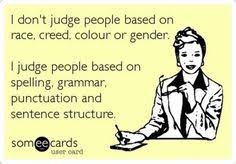
This post may contain affiliate links or codes. This won’t increase your cost, but it helps keep TNCPT alive, and free of annoying ads! Thank you for your support. 🙂
Grammar and syntax basics for health writers
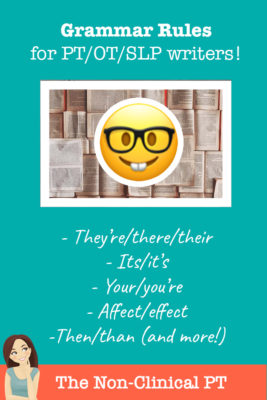
1. The it’s/its rule
Use the apostrophe in “it’s” only as a contraction for “it is” and “it has.”
Examples:
- “It’s high time that I start getting my non-clinical resume ready to go.”
- “It’s normal to get nervous before an informational interview.”
- “The cats’ dinner will be ready when it’s ready, dang it!”
People often mistakenly use “it’s” with the apostrophe as a possessive (showing ownership).
This is INCORRECT: “The cat wants it’s dinner.” WRONG!
Just think of it in the way that you’d say his, hers or its: The cat wants his dinner. The cat wants her dinner. The cat wants its dinner.
There’s no apostrophe in any of these: his name, her name, its name.
Examples:
- “Sometimes, I think my computer has a mind of its own!”
- “That cat keeps walking around with its nose in the air!”
Again, think of “its” the same way you’d think of “his” or “hers.” No apostrophe. 🙂

2. You’re vs. your
“You’re” is a contraction. It links two words together. (That’s why there’s that little apostrophe in the word.)
Think of “you’re” as a shortened version of “you are.”
Examples:
- “You’re going to make an excellent health writer!”
- “You’re going to land the best clinical liaison job EVER!”
- “You’re going to find great non-clinical CEU options for physical therapists at MedBridge!”
“Your” is possessive. It implies that you own something.
Examples:
- “Your cat is over there, looking all cute and waiting for its meal.”
- “I think you’re ready for your very first physical therapy startup job!”
3. There vs. their vs. they’re

“There” is a location or a concept.
Examples:
- “Look over there! It’s a PT who started her own MSD prevention practice!”
- “There is no way I’ll be leaving patient care for an alternative OT job within the next six months!” (Oh, but you will!)
“Their” is a way to describe someone’s ownership of something.
Examples:
- “Their cat is such a lazy blob!”
- “Their job posting is riddled with grammatical errors. Ugh!”
“They’re” is a contraction of “they are.”
Examples:
- “They’re going to be so happy when an SLP joins their team! We have tons of transferrable skills!”
- “I don’t know what they’re going to do when their cat likes me better.”
4 . Affect vs. effect
“Affect” is an action word.
If you are going to improve the wording on your resume, you will positively affect your chances at getting an interview.
One exception is “flat affect,” which can be used to describe a patient’s demeanor.
Examples:
- “I don’t want to affect the pet-to-human ratio too much by getting another cat.”
- “Failing to adjust your resume for specific jobs can negatively affect your chances of being hired.”
- “The patient had a flat affect throughout the treatment session.”
“Effect” is the result of an action.
If you are going to improve the wording on your resume, the effect is that you will likely land an interview.
One exception is “effect change.”
Examples:
- “PTs, OTs, and SLPs will have a positive effect in the world of healthcare innovation.”
- “The effect of getting another cat is that life just got way more awesome!”
- “That occupational therapist effected true change throughout the hospital.”
5. Too vs. to vs. two
“Too” is a descriptor for words like much/little/crazy. It also means also/as well.
Example:
- “Don’t make fun of me too much; you may wind up with thirty cats, too!”
“To” is what you think it is.
Example:
- “I’m going to try to land a director of rehabilitation job.”
“Two” is a number.
Example:
- “Two cats are better than one!”
6. Then vs. than
“Then” is a time descriptor.
Examples:
- “First, I’m going to get a cat. Then, I’m going to get another cat!”
- “I thought I would work as a treating PT forever, but then I realized I’d be much happier in a physical therapy education job.”
“Than” is a comparative term.
Example:
- “Working as a utilization reviewer is a much better fit for me than patient care ever was.”
Here is an example of both then and than in a sentence:
- “I’ll submit my resume and cover letter, then wait for my interview, because I know I’m a better candidate than anyone else applying!”
7. Semicolons vs. commas
A semicolon connects two separate sentences that have something in common.
Examples:
- “Try personalizing your cover letter to include why you’re drawn to the company; it improves your chances of getting an interview.”
- “People tend to erroneously use a comma instead of a semicolon; try using a semicolon, as it makes you look super smart!!!”
Commas are a way to indicate a “pause” in the sentence. They can also create serial relationships, and they are a good way to present options.
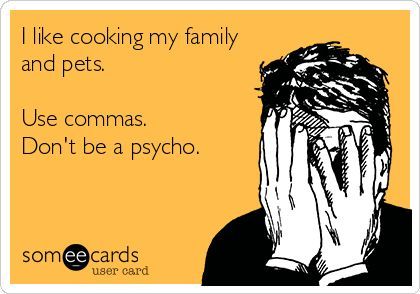
Example:
- “If you want to land a job as a therapy reviewer, you’ll need to show that you’re detail-oriented, decisive, and able to be poised on the phone.”
- “I was trying to decide between pursuing a role as a clinical care coordinator, rehab liaison, or inpatient care coordinator, but then I realized they’re very similar roles!”
- “If you’re considering letting your PT license lapse, don’t. It’s important to renew your physical therapy license, even if you’re planning to leave direct patient care.”
8. Apostrophes for possessives vs. plurals vs. contractions
Possessives mean that the person owns something. These DO use apostrophes.
There are two types of possessives: singular and plural. If a single person/animal/object owns something, it’s written like this: cat’s | child’s | clown’s.
When a word ends in an s, the apostrophe falls after the s.
Example:
- “Your cat’s attitude amuses me.”
- “Your cats’ attitudes amuse me.” (This is referring to more than one cat. Also note that “attitudes” is used instead of “attitude.” Each cat has its own attitude, and the attitudes are not part of one glob of evil overlord cat with a single attitude…or are they? Mwahahahah!)
- “My boss’ rule is that we’re fired if we’re more than five minutes late!”
Plurals mean a multiple of something.
When you see “Appetizer’s” on a menu, it’s because the restaurant screwed up the rule. The appetizers don’t own anything!
Examples:
- “Does anyone want to order appetizers, or should we go straight for our mains?”
- “One of the requirements for this job is an active RN license, but I’m going to apply anyway; PTs, OTs, and SLPs are perfectly capable of performing this role.”
Note that PTs, OTs, and SLPs do not use apostrophes. That’s because we’re referring to multiple PTs, not trying to say that a PT possesses something.
Contractions combine two words into one (to keep things simple), and they do use apostrophes.
Example:
- “My cat’s going to be stoked that I picked up some treats at the store.”
I see this rule messed up a lot with days. So remember, the correct uses are:
- “Monday’s a great time to reach out to a new company on LinkedIn!” (Monday is a great time = contraction = use an apostrophe.)
- “I love Fridays because they’re the best!” (Fridays is plural = no apostrophe.)
Feeling overwhelmed? Check out Udemy’s affordable “Grammar Boot Camp” course

9. The Oxford comma
The Oxford comma, also known as the serial comma, is used after the second to last item in a list of items in a sentence.
The following sentence uses the Oxford comma.
- “I ate chicken, fish, and beef when I was young.”
The following sentence does not use the Oxford comma.
- “I ate chicken, fish and beef when I was young.”
There’s a big debate about whether or not the Oxford comma is necessary and/or appropriate. When you’re a health writer, you’ll often be required to follow the standards of whatever guidelines your publication/employer uses. You might use AP style, Chicago style, or AMA style.
If you’re starting your own blog or publication, I’ll recommend that you DO use the Oxford comma.
Why? This illustration sums it up….

10. Hyphens
I’m not going to get into en dashes vs. em dashes; that’s for a more advanced article. But I’d like to cover hyphens. A hyphen is often used to show that two words before a noun go together to work as an adjective.
Examples:
- “Let’s give this occupational therapist an interview; he is a well-rounded candidate.”
- “The PT thinks he is under-qualified for this role, but he is wrong!”
There is no hyphen between an adverb and adjective before a noun, though.
Example:
- “Understanding your transferrable skills is highly beneficial during your job search!”
Love writing so much that you want to make a career of it?
Save 20% on Breaking into Health Writing (by Health Writer Hub) – This course is awesome, and it’s quite affordable for what you get, especially after the exclusive discount for The Non-Clinical PT readers! Learn more about the course here, but be sure to use our affiliate link to save 20%. It’s a great introduction for a new or aspiring copywriter needs to understand how to actually start writing. It covers types of writing that are out there (medical vs. marketing vs. health, etc.), and it explores what you need to make an actual plan to get there. I highly recommend this course if you’re looking for a writing career where you write content for other companies.
Click here to save 20% on Breaking into Health Writing! (by Health Writer Hub)

Not sure what you want to do with your career? Remember, stellar written communication is the foundation for so many non-clinical careers! Explore what’s out there with Non-Clinical 101: the course that gets results!

